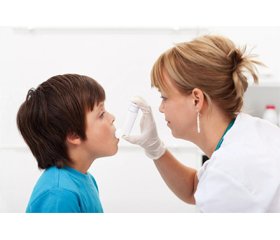Журнал «Здоровье ребенка» Том 17, №1, 2022
Вернуться к номеру
Структура сенсибілізації та клінічний перебіг бронхіальної астми в дітей шкільного віку, сенсибілізованих до алергенів котів
Авторы: Кривопустова М.В.
Національний медичний університет імені О.О. Богомольця, м. Київ, Україна
Рубрики: Педиатрия/Неонатология
Разделы: Клинические исследования
Версия для печати
Актуальність. Бронхіальна астма є актуальною проблемою сучасної педіатрії, при цьому алергія до котів має важливе значення в її розвитку. Мета дослідження: вивчити структуру сенсибілізації та особливості клінічного перебігу бронхіальної астми у дітей шкільного віку, сенсибілізованих до алергенів котів. Матеріали та методи. Проаналізовані результати дослідження 430 дітей віком 6–17 років з сенсибілізацію до алергенів котів. Результати. Сенсибілізація до Fel d 1 виявлена у 96,05 %, Fel d 2 — 6,74 %, Fel d 4 — 21,63 %, Fel d 7 — у 25,81 % осіб. Переважала сенсибілізація до одного з алергенів котів, серед комбінацій — поєднання Fel d 1 та Fel d 7. Також показана супутня сенсибілізація до пилку, собаки, кліщів домашнього пилу, продуктів харчування тощо. Існує сильний кореляційний зв’язок між сенсибілізацією до ліпокаліну кота Fel d 7 та до ліпокаліну собаки Can f 1. Показаний кореляційний зв’язок між наявністю тяжкої астми та кількістю алергенів котів, сенсибілізацією до трьох та більше алергенів котів, до трьох ліпокалінів Fel d 4, Fel d 7, Can f 1. Висновки. У дітей шкільного віку з бронхіальною астмою та сенсибілізацією до алергенів котів домінує сенсибілізація до утероглобіну Fel d 1. Сенсибілізація до ліпокаліну Fel d 7 виявлена у 25,81 % осіб. Доведений прямий кореляційний зв’язок між наявністю тяжкої астми та кількістю алергенів котів. Слід враховувати перехресну реактивність ліпокаліну котів Fel d 7 та основного собачого алергену Can f 1. Показано клінічне значення при тяжкому перебігу астми сенсибілізації до трьох ліпокалінів Fel d 4, Fel d 7, Can f 1.
Background. Asthma is an actual problem of modern pediatrics, and allergy to cats is important in its development. The study was aimed to investigate the structure of sensitization and features of the clinical course of asthma in school-age children sensitized to cat allergens. Materials and methods. The results of a study of 430 children aged 6–17 years with sensitization to cat allergens were analyzed. Results. Sensitization to Fel d 1 was detected in 96.05 % of patients, Fel d 2 — in 6.74 %, Fel d 4 — in 21.63 %, Fel d 7 — in 25.81 %. Sensitization to one of the allergens of cats prevailed, among the combinations — a combination of Fel d 1 and Fel d 7. Concomitant sensitization to pollen, dogs, house dust mites, food, etc. is also shown. There is a strong correlation between sensitization to Fel d 7 cat lipocalin and Can f 1 dog lipocalin. The correlation between the presence of severe asthma and the number of cat allergens, sensitization to three or more cat allergens, to three lipocalin Fel d 4, Fel d 7, Can f 1 is shown. Conclusions. In school-age children with asthma and sensitization to cat allergens, sensitization to uteroglobin Fel d 1 dominates. Sensitization to lipocalin Fel d 7 was detected in 25.81 % of cases. There is a direct correlation between the presence of severe asthma and the number of allergens in cats. The cross-reactivity of cat lipocalin Fel d 7 and the basic canine allergen Can f 1 should be considered. The clinical significance in severe asthma sensitization to three lipocalins Fel d 4, Fel d 7, Can f 1 is shown.
алергени котів; бронхіальна астма; діти; сенсибілізація
cat allergens; bronchial asthma; children; sensitization
Вступ
Матеріали та методи
Результати
Обговорення
Висновки
- Reddel H.К. et al. Global Initiative for Asthma Strategy 2021: Executive Summary and Rationale for Key Changes. J. Allergy Clin. Immunol. Pract. 2022 Jan. 10(1S). S1-S18. doi: 10.1016/j.jaip.2021.10.001.
- Global Initiative for Asthma. Global Strategy for Asthma Management and Prevention [Електронний ресурс]. 2021. Режим доступу: https://ginasthma.org/gina-reports/
- Волосовець О.П., Больбот Ю.К., Кривопустов С.П. та ін. Бронхіальна астма в дітей України: медико-екологічні паралелі захворюваності та поширеності. Медичні перспективи. 2020. 3. 184-191. doi: 10.26641/2307-0404.2020.3.214861.
- Волосовець О.П., Больбот Ю.К., Бекетова Г.В. та ін. Алергічний марш у дітей України. Медичні перспективи. 2021. 4. 181-188.
- Наказ МОЗ України від 23.12.2021 № 2856 «Про затвердження Уніфікованого клінічного протоколу первинної та вторинної (спеціалізованої) медичної допомоги «Бронхіальна астма у дітей» [Електронний ресурс]. 2021. Режим доступу: https://www.dec.gov.ua/wp-content/uploads/2021/12/2021_2856_ykpmd_ba_dit.pdf
- Клінічна настанова, заснована на доказах «Бронхіальна астма». Державний експертний центр МОЗ України [Електронний ресурс]. 2021. Режим доступу: https://www.dec.gov.ua/wp-content/uploads/2021/12/2021_09_14_kn_ba.pdf
- Asarnoj A. et al. Sensitization to cat and dog allergen molecules in childhood and prediction of symptoms of cat and dog allergy in adolescence: A BAMSE/MeDALL study. J. Allergy Clin. Immunol. 2016 Mar. 137(3). 813-21.e7. doi: 10.1016/j.jaci.2015.09.052.
- Curin M., Hilger C. Allergy to pets and new allergies to uncommon pets. Allergol. Select. 2017 Aug 4. 1(2). 214-221. doi: 10.5414/ALX01842E.
- Bonnet B., Messaoudi K., Jacomet F. et al. An update on molecular cat allergens: Fel d 1 and what else? Chapter 1. Fel d 1, the major cat allergen. Allergy Asthma Clin. Immunol. 2018 Apr 10. 14. 14. doi: 10.1186/s13223-018-0239-8.
- Chan S.K., Leung D.Y.M. Dog and Cat Allergies: Current State of Diagnostic Approaches and Challenges. Allergy Asthma Immunol. Res. 2018 Mar. 10(2). 97-105. doi: 10.4168/aair.2018.10.2.97.
- Sparkes A.H. Human allergy to cats: A review of the impact on cat ownership and relinquishment. J. Feline Med. Surg. 2022 Jan. 24(1). 43-52. doi: 10.1177/1098612X211013016.
- Matricardi P.М. et al. EAACI Molecular Allergology User’s Guide. Pediatr. Allergy Immunol. 2016 May. 27. Suppl. 23. 1-250. doi: 10.1111/pai.12563.
- Konradsen J.R. et al. Allergy to furry animals: New insights, diagnostic approaches, and challenges. J. Allergy Clin. Immunol. 2015 Mar. 135(3). 616-25. doi: 10.1016/j.jaci.2014.08.026.
- Apostolovic D. еt al. The cat lipocalin Fel d 7 and its cross-reactivity with the dog lipocalin Can f 1. Allergy. 2016 Oct. 71(10). 1490-5. doi: 10.1111/all.12955.
- Dávila I. et al. Consensus document on dog and cat allergy. Allergy. 2018 Jun. 73(6). 1206-1222. doi: 10.1111/all.13391.

